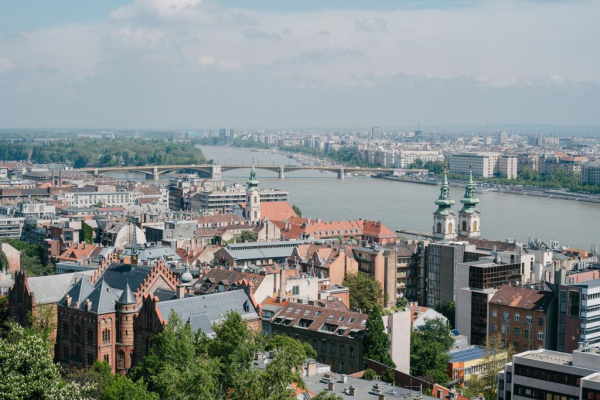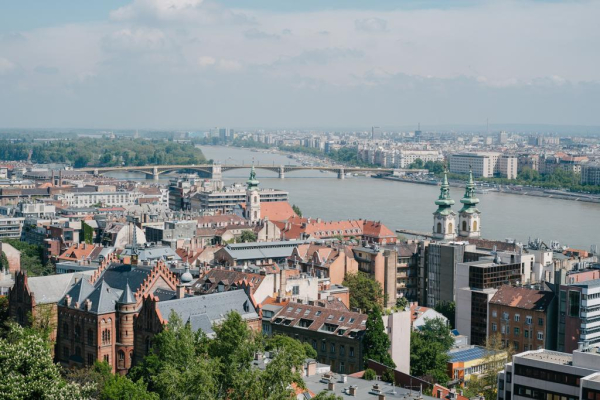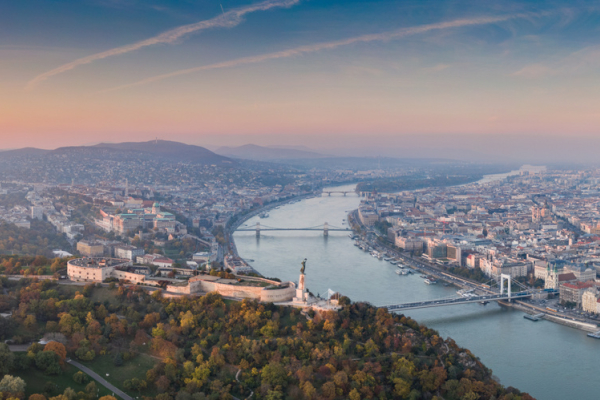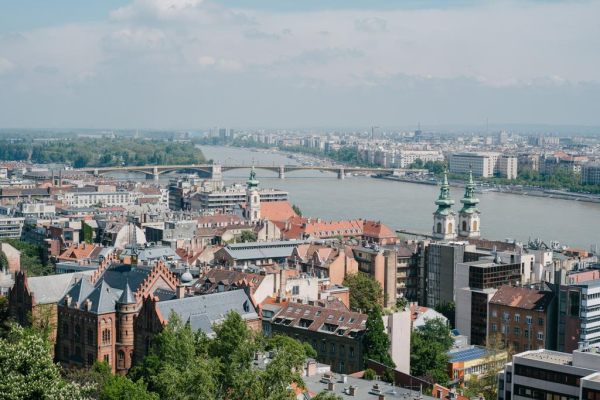Hungary
GENERAL INFORMATION

Geography and climate
Hungary is located in Central Europe and borders Ukraine, Romania, Slovakia, Serbia, Croatia, Slovenia and Austria. Hungary is a member of NATO and the European Union. The official currency of the country is the Hungarian forint.
Hungary has a continental climate. Summers are hot, winters are mild, and spring and autumn are warm and long. The hottest month of the year is July, with an average temperature of around +22°C. The coldest month is January. The average temperature in January is around -1°C. The number of sunny days ranges from 70 to 190 per year.
The relief in Hungary is predominantly flat. The Central Danubian Plain occupies most of the country. In the west of Hungary are the foothills of the Alps - Alpokalya. In the north of the country are the North Hungarian Mountains, in the south - the Mecsek Mountains.
The key water artery of the country is the Danube River. All other rivers flow into its basin. The largest lake is Balaton. On the coast of the lake is the famous resort of Hungary with access to mineral and thermal springs. The country has ten national parks with picturesque views and untouched nature.
Economy and infrastructure
Hungary has a rapidly developing industrial-agrarian economy. Hungary actively cooperates with the countries of the European Union, directing about 80% of exports to them.
In agriculture, Hungary has a developed sector of horticulture and viticulture. A significant contribution to the country's economy is made by the developed field of mechanical engineering, as well as the production of machine tools, communications, and measuring instruments.
The country has established production of the pharmaceutical, chemical, metallurgical, textile and food industries. Hungary produces brown coal, bauxites, gas, oil, copper, iron, manganese ores, thermal and mineral waters.
Hungary has a well-developed rail network. Traveling by train around the country is very convenient. Railways connect the largest cities in the country: Budapest, Tihany, Debrecen, Miskolc, Szentendre, Szeged, Pecs and others.
The length of Hungary's highways is about 30 thousand kilometers. The coverage is good, traveling by car in Hungary is convenient and easy.
The country also has a well-developed public transport system. Trolleybuses, trams, buses and the Budapest metro start running at about half past five in the morning and end at about 23 pm. Hungary has five international airports. Major airports: Budapest Airport, Debrecen Airport and Hévíz Airport.
Benefits of living in Hungary
The standard of living in Hungary is dynamically improving every year. There is a favorable climate and ecology. In 2020, the life expectancy of the average Hungarian was 76.1 years. Also, the prices for living in Hungary are quite moderate, especially in comparison with other European countries.
Hungary has a convenient geographical location - it is convenient to travel from central Europe to neighboring countries. Even more opportunities for travel arise thanks to the Hungarian low-cost airline (budget airline) WizzAir, which operates flights at very low prices.
Customs in Hungary
Hungary is rich in preserved folk traditions and cultural customs. So, for example, the value of folk art "Mathiaux" is even recognized by UNESCO. Mathieu is a satin stitch embroidery with floral motifs that has its origins in the 19th century. The tradition of weaving Halash lace is also alive. An interesting custom characteristic of Hungary is falconry. This tradition is also included in the UNESCO Intangible Heritage List.
It is curious for visitors to look at the course of the mummers in the city of Mohacs. The procession personifies the farewell to winter and the arrival of spring. Hungarians love and protect their culture, and you can get acquainted with it both in the numerous ethnographic museums of the country, and when visiting national holidays and celebrations.
Cultural heritage
Budapest is called "Paris on the Danube", it is one of the most beautiful cities in Europe. The building of the Hungarian Parliament is the hallmark of the city. The architecture of the Parliament mixed the neo-Gothic style and the Parisian Beaux-Arts, resulting in a unique building, in its grandeur similar to the famous Palace of Westminster. In addition to the parliament in Budapest, the attention of visitors is attracted by the Buda Castle, Szechenyi Chain Bridge, the citadel, Vajdahunyad Castle, Matthias Church, and, of course, the famous Szechenyi Bath, where you can spend the whole day relaxing in the healing waters of local thermal springs.
The Benedictine monastery, located in the city of Pannonhalma, is the oldest monastery in Hungary and the second largest Catholic abbey in the world. Hortobágy National Park is famous for its untouched nature and open spaces. It is interesting to get acquainted with the cities of Sopron and Gyor. Sopron has a two thousand year history and was founded by the ancient Romans. The city of Győr is known for its well-preserved medieval architecture. Hungary is also famous for its Tokaj wines. The Tokaj wine region is a UNESCO World Heritage Site.

Education in Hungary
Education in Hungary meets European standards. Hungarian universities offer foreign students programs in English. The cost of education varies from four to seven thousand euros per year. There is an opportunity to study in Hungarian, but due to the complexity and rarity of the local language, most often foreign students prefer English-language programs.
You can enter a Hungarian university after the 11th grade. The most prestigious universities in the country: Semelvey Medical University, University of Pecs, University of Debrecen (founded in 1538), University of Budapest (Lorand Eötvös University), Central European University of Budapest.
.
Best real estate deals in hungary
Regions:
Actual
News
By sending a message, you thereby accept the user agreement and confirm that you have read and agree to the privacy policy of this website.












